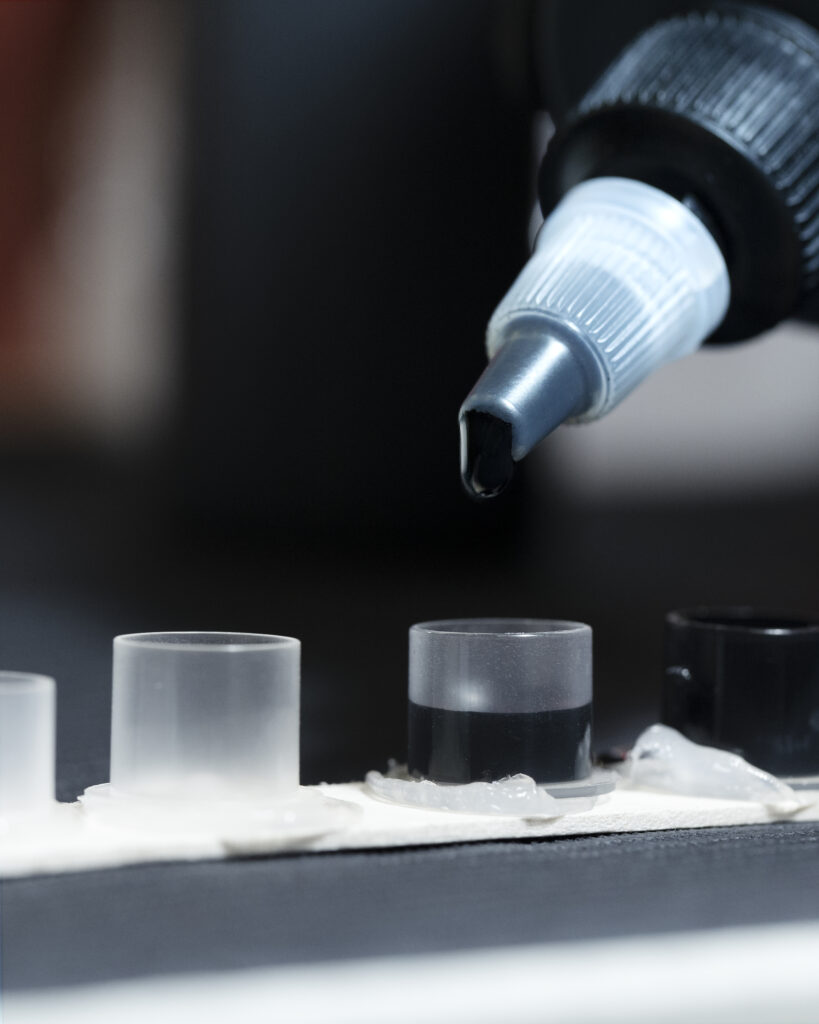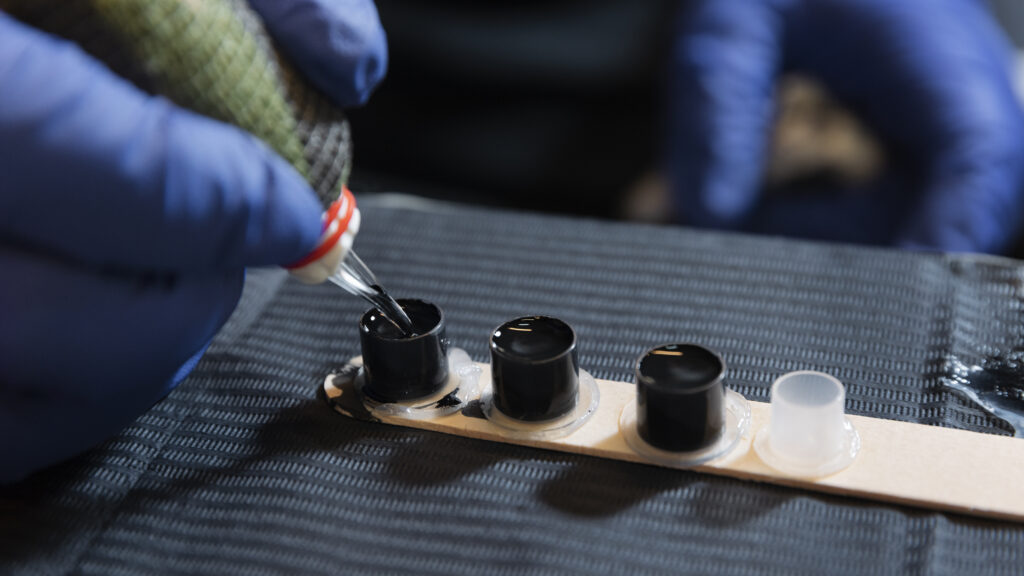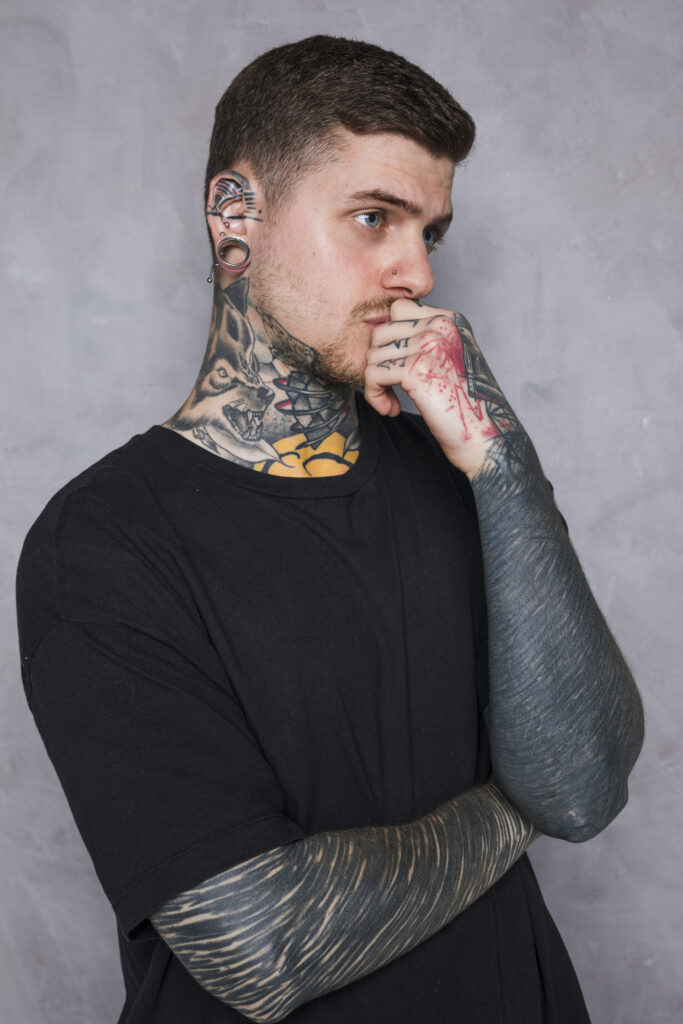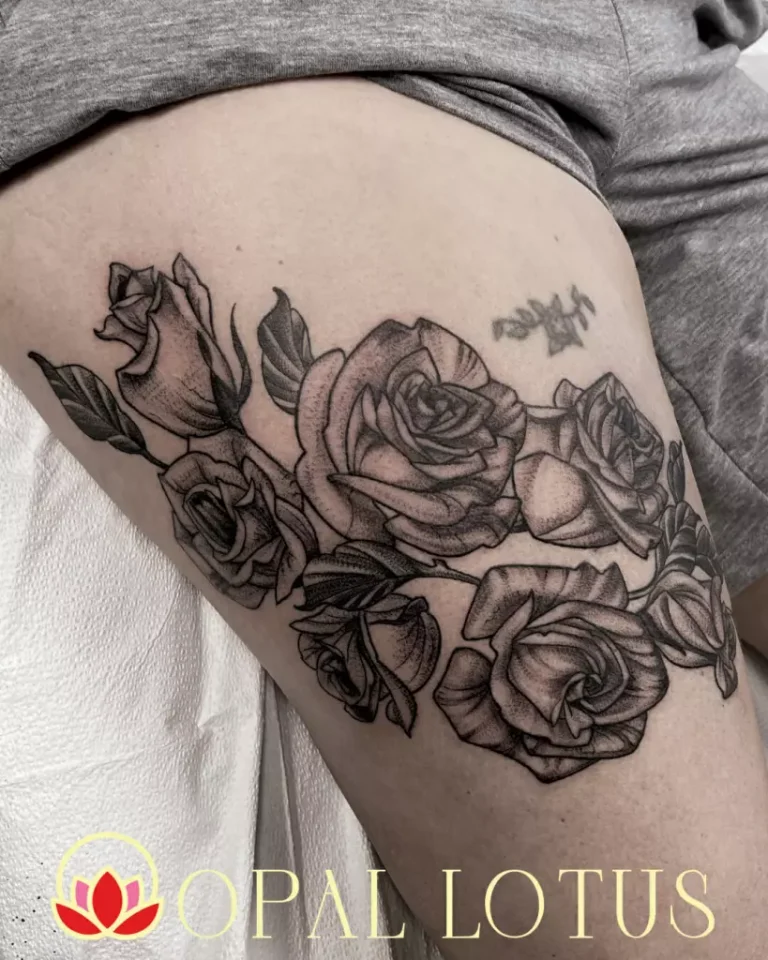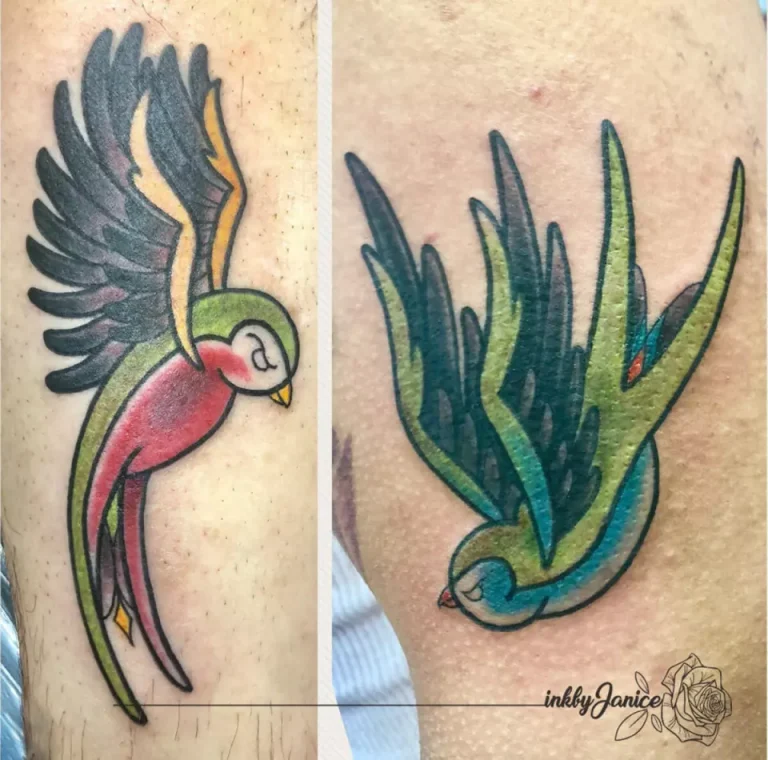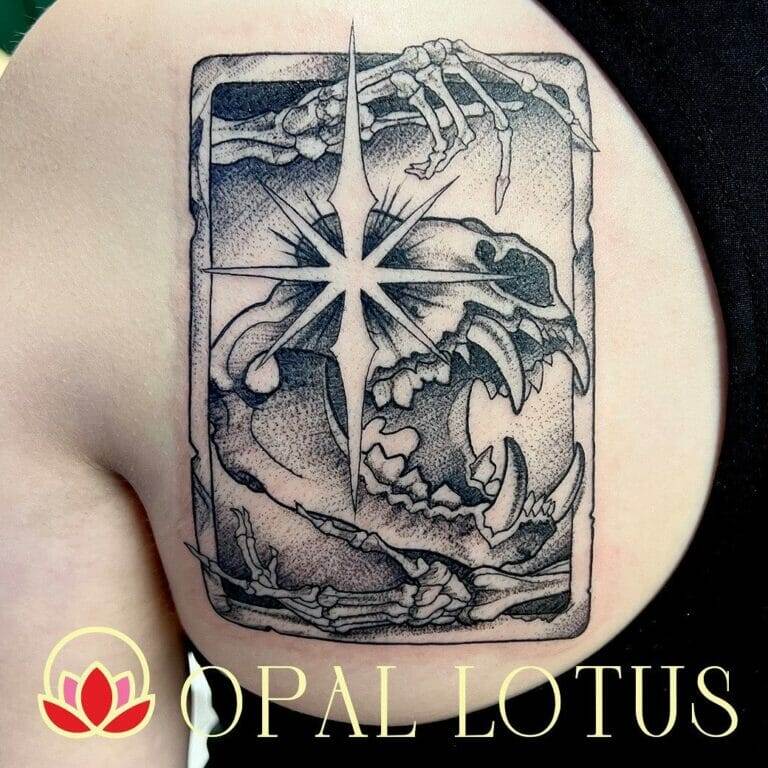In recent years, blackout tattoos have surged in popularity, captivating the attention of both tattoo enthusiasts and the general public alike. This unique form of body art involves the extensive use of solid black ink to cover large areas of the skin, often transforming the canvas into a striking visual statement. The trend has gained traction on social media platforms, where images of intricate blackout designs are shared and celebrated.
As more individuals seek to express their identity through body art, blackout tattoos have emerged as a bold choice that defies traditional tattoo conventions. The rise of blackout tattoos can be attributed to a variety of factors. One significant influence is the growing acceptance of tattoos in mainstream culture, allowing for more experimental and avant-garde styles to flourish.
Additionally, the desire for personal expression has led many to seek out tattoos that convey a sense of individuality and uniqueness. Blackout tattoos, with their stark and dramatic appearance, offer a way for individuals to stand out in a world where body art is increasingly common. As artists continue to innovate and push the boundaries of tattooing, blackout tattoos have carved out a distinct niche within the broader tattoo landscape.
Key Takeaways
- Blackout tattoos are a rising trend in the tattoo industry, characterized by large areas of solid black ink covering the skin.
- Controversy surrounds blackout tattoos, with some arguing that they lack artistic value and can be detrimental to the skin.
- The meaning behind blackout tattoos varies, with some individuals using them to cover up old tattoos or scars, while others see them as a bold fashion statement.
- The process of getting a blackout tattoo involves extensive planning and multiple sessions with a skilled tattoo artist.
- Blackout tattoos make a bold statement, often symbolizing a sense of empowerment and self-expression for those who choose to get them.
The Controversy Surrounding Blackout Tattoos
Despite their rising popularity, blackout tattoos are not without controversy. Critics often raise concerns about the potential health risks associated with extensive ink coverage, particularly when it comes to skin reactions or complications during the healing process. The sheer amount of ink used in blackout tattoos can lead to increased discomfort and longer healing times compared to traditional tattoos.
Furthermore, some argue that the practice may be a form of self-harm or an impulsive decision made without fully considering the long-term implications. Another point of contention is the aesthetic value of blackout tattoos. Detractors argue that they can obscure the beauty of intricate designs and detailed artwork that many tattoo artists strive to create.
This has led to debates within the tattoo community about the merits of blackout tattoos versus more traditional styles. While some view them as a powerful form of self-expression, others see them as a rejection of the artistry that defines tattoo culture. This ongoing dialogue highlights the diverse perspectives surrounding body art and the evolving nature of personal expression.
The Meaning Behind Blackout Tattoos
For many individuals, blackout tattoos carry deep personal significance. They can serve as a form of reclamation, allowing people to cover up past tattoos that no longer resonate with their identity or experiences. This transformative aspect of blackout tattoos can be particularly empowering for those who have undergone significant life changes or who wish to erase reminders of painful memories.
By choosing to cover their skin with solid black ink, individuals often find a sense of liberation and renewal. Moreover, blackout tattoos can symbolize resilience and strength. The act of transforming one’s body through such a bold choice can represent overcoming adversity or embracing one’s true self.
For some, these tattoos become a visual narrative of their journey, marking milestones or significant turning points in their lives. As such, blackout tattoos can be seen as more than just a trend; they embody personal stories and serve as a testament to individual growth and self-acceptance.
The Process of Getting a Blackout Tattoo
The process of getting a blackout tattoo is distinct from traditional tattooing methods, requiring careful planning and execution. Initially, individuals interested in this style should consult with an experienced tattoo artist who specializes in blackout work. This consultation allows for discussions about design preferences, placement, and the overall vision for the tattoo.
Artists often emphasize the importance of understanding the commitment involved, as blackout tattoos can cover large areas and may require multiple sessions to achieve the desired effect. During the actual tattooing process, artists typically use a technique that involves layering black ink to create an even and saturated appearance. This can be physically demanding for both the artist and the client, as extensive coverage can lead to discomfort and fatigue.
Pain management strategies are often discussed beforehand, ensuring that clients are prepared for the experience. Aftercare is also crucial; proper care helps prevent complications and ensures that the tattoo heals well, maintaining its bold appearance over time.
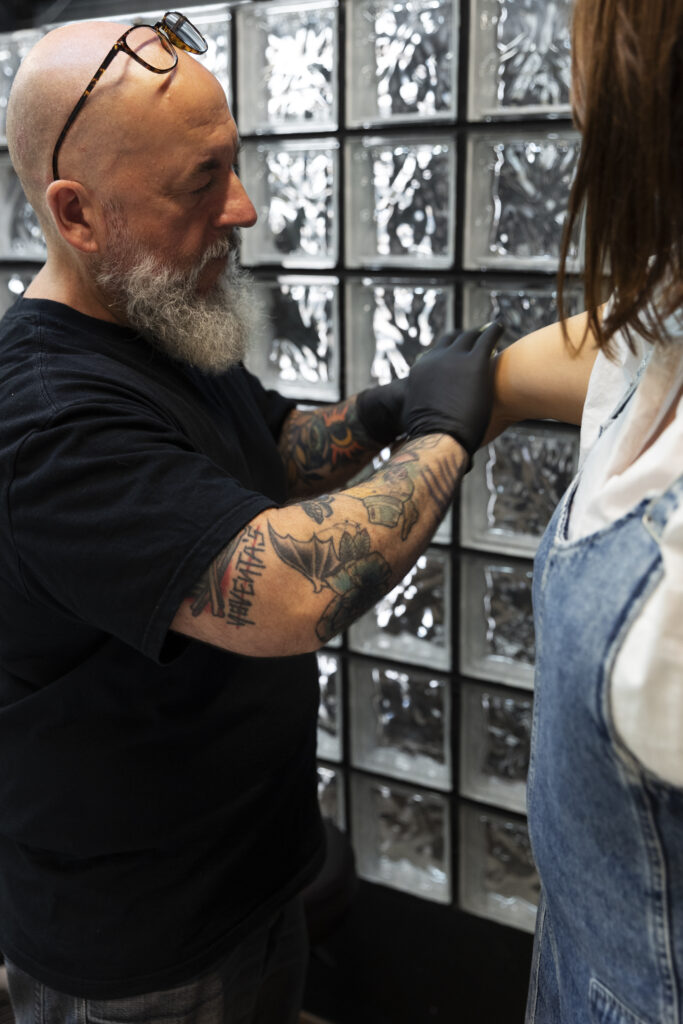
Blackout Tattoos: Making a Bold Statement
Blackout tattoos are undeniably bold, making them an eye-catching choice for those who wish to make a statement with their body art. The sheer volume of black ink creates a striking contrast against the skin, drawing attention and sparking conversations. For many wearers, this boldness is intentional; they want their tattoos to be a reflection of their personality and beliefs.
In a society where conformity often reigns, blackout tattoos stand out as symbols of individuality and defiance. Moreover, these tattoos can serve as a form of protest or commentary on societal norms surrounding beauty and body image. By choosing to cover their skin in black ink, individuals challenge conventional standards and assert their right to define their own aesthetic.
This act can be liberating, allowing wearers to embrace their uniqueness without fear of judgment. In this way, blackout tattoos transcend mere decoration; they become powerful expressions of identity and autonomy.
Blackout Tattoos as a Last Resort
For some individuals, blackout tattoos represent a last resort in their journey with body art. Many people may find themselves dissatisfied with previous tattoos that no longer align with their identity or values. In these cases, blackout tattoos offer an opportunity for transformation and renewal.
By covering unwanted ink with solid black, individuals can reclaim their bodies and create a fresh canvas for self-expression. This process can be particularly significant for those who have experienced trauma or regret associated with past tattoos. The act of covering these marks can symbolize healing and moving forward from painful experiences.
For many, blackout tattoos become a powerful tool for self-empowerment, allowing them to take control over their bodies and narratives. In this sense, they serve not only as a physical transformation but also as an emotional one.
The Psychological Impact of Blackout Tattoos
The psychological implications of getting a blackout tattoo can be profound. For many individuals, the decision to undergo such a drastic change is rooted in deep-seated emotions and personal experiences. The act of covering old tattoos can evoke feelings of liberation and relief, allowing individuals to shed parts of their past that no longer serve them.
This transformative experience can lead to increased self-esteem and confidence as they embrace their new identity. However, it is essential to recognize that not everyone may experience positive psychological effects from blackout tattoos. For some individuals, the decision may stem from impulsive choices or external pressures rather than genuine self-expression.
In these cases, individuals may later grapple with feelings of regret or dissatisfaction with their decision. It is crucial for those considering blackout tattoos to engage in self-reflection and ensure that their motivations align with their true desires.

The Future of Blackout Tattoos
As tattoo culture continues to evolve, the future of blackout tattoos remains uncertain yet intriguing. With advancements in tattoo technology and techniques, artists are likely to explore new ways to incorporate blackout elements into their work while maintaining safety and artistry standards. This could lead to innovative designs that blend blackout styles with other artistic approaches, creating unique hybrid forms of body art.
Moreover, as societal attitudes toward body art continue to shift, blackout tattoos may gain further acceptance within mainstream culture. As more individuals embrace diverse forms of self-expression, these bold statements may become less controversial and more celebrated as valid forms of personal narrative. Ultimately, the future of blackout tattoos will likely reflect broader trends in body art and individual expression, continuing to challenge norms while empowering wearers to tell their stories through ink on skin.
FAQs
What are blackout tattoos?
Blackout tattoos are a style of tattooing where large areas of the skin are filled in completely with black ink, creating a solid black design.
What is the purpose of blackout tattoos?
The purpose of blackout tattoos can vary from person to person, but some individuals choose this style as a bold and dramatic statement, while others may use it to cover up existing tattoos or scars.
Are blackout tattoos permanent?
Yes, like all tattoos, blackout tattoos are permanent. The process involves injecting ink into the skin using a needle, and the ink becomes trapped in the dermis layer of the skin, making it difficult to remove.
What are the potential risks of blackout tattoos?
As with any tattoo, there are potential risks associated with blackout tattoos, including infection, allergic reactions to the ink, and the possibility of regretting the decision due to the permanence of the tattoo.
Can blackout tattoos be removed?
Blackout tattoos can be difficult to remove, and the process of laser tattoo removal may not be as effective on solid black ink as it is on other colors and designs. It’s important to carefully consider the decision to get a blackout tattoo due to its permanence.


